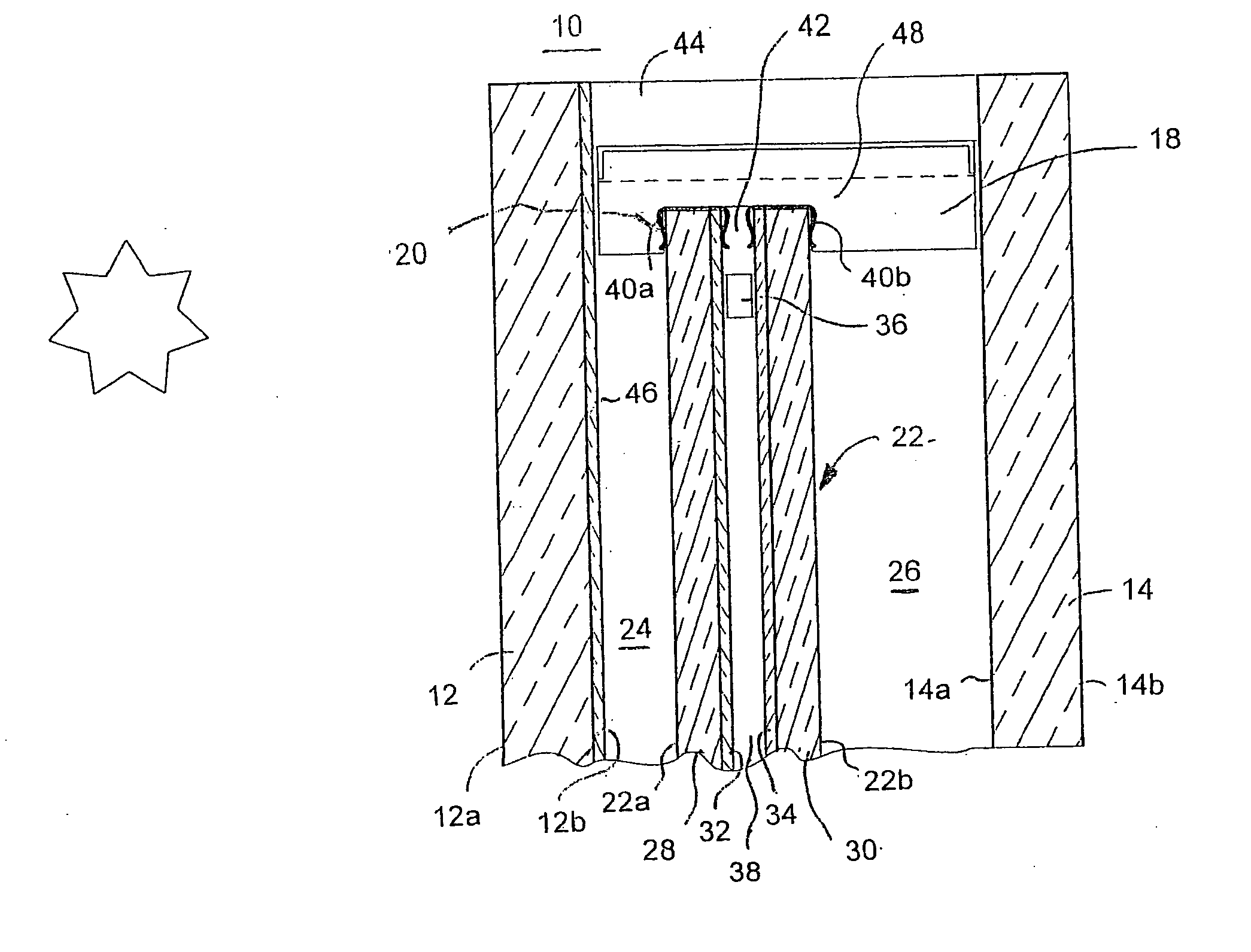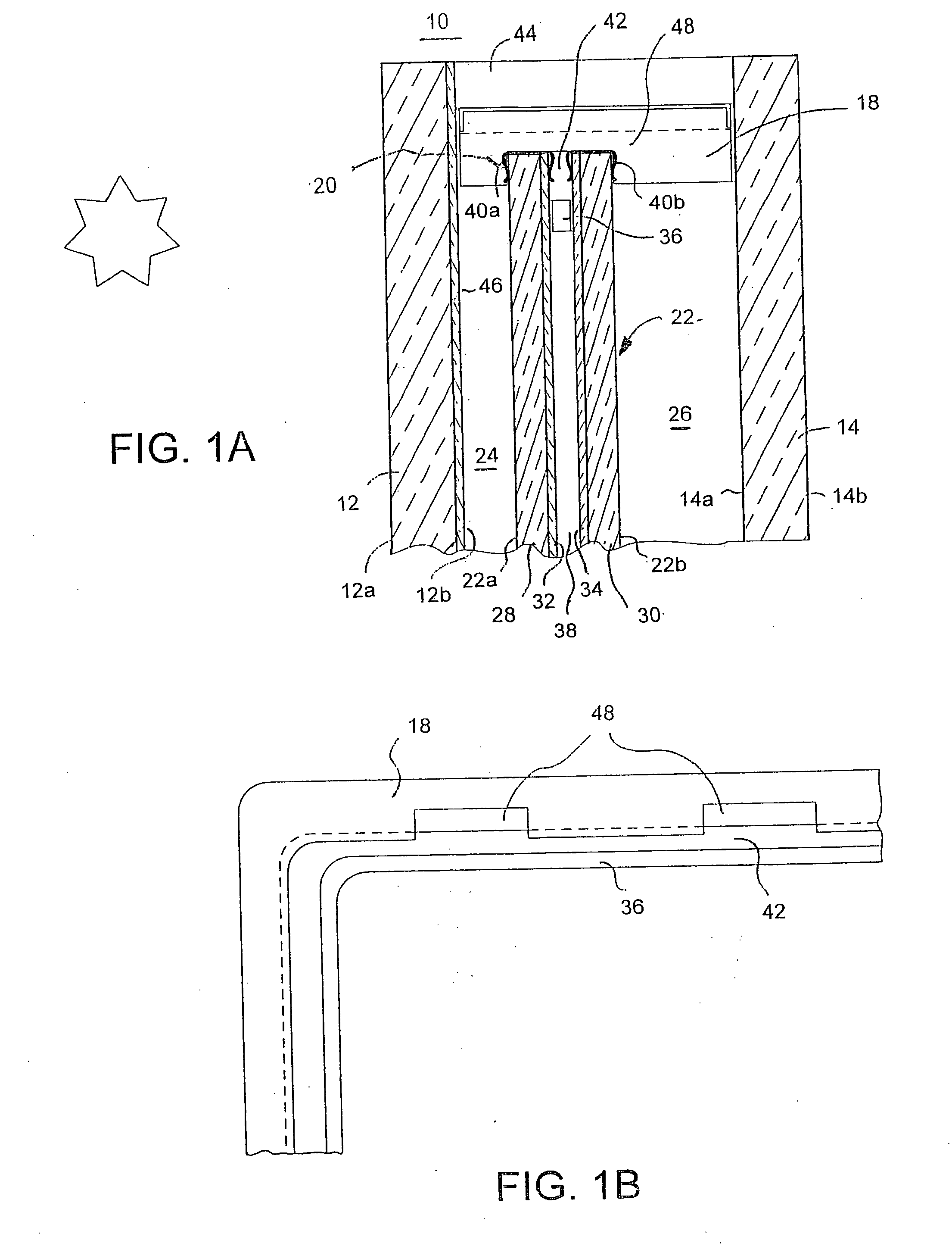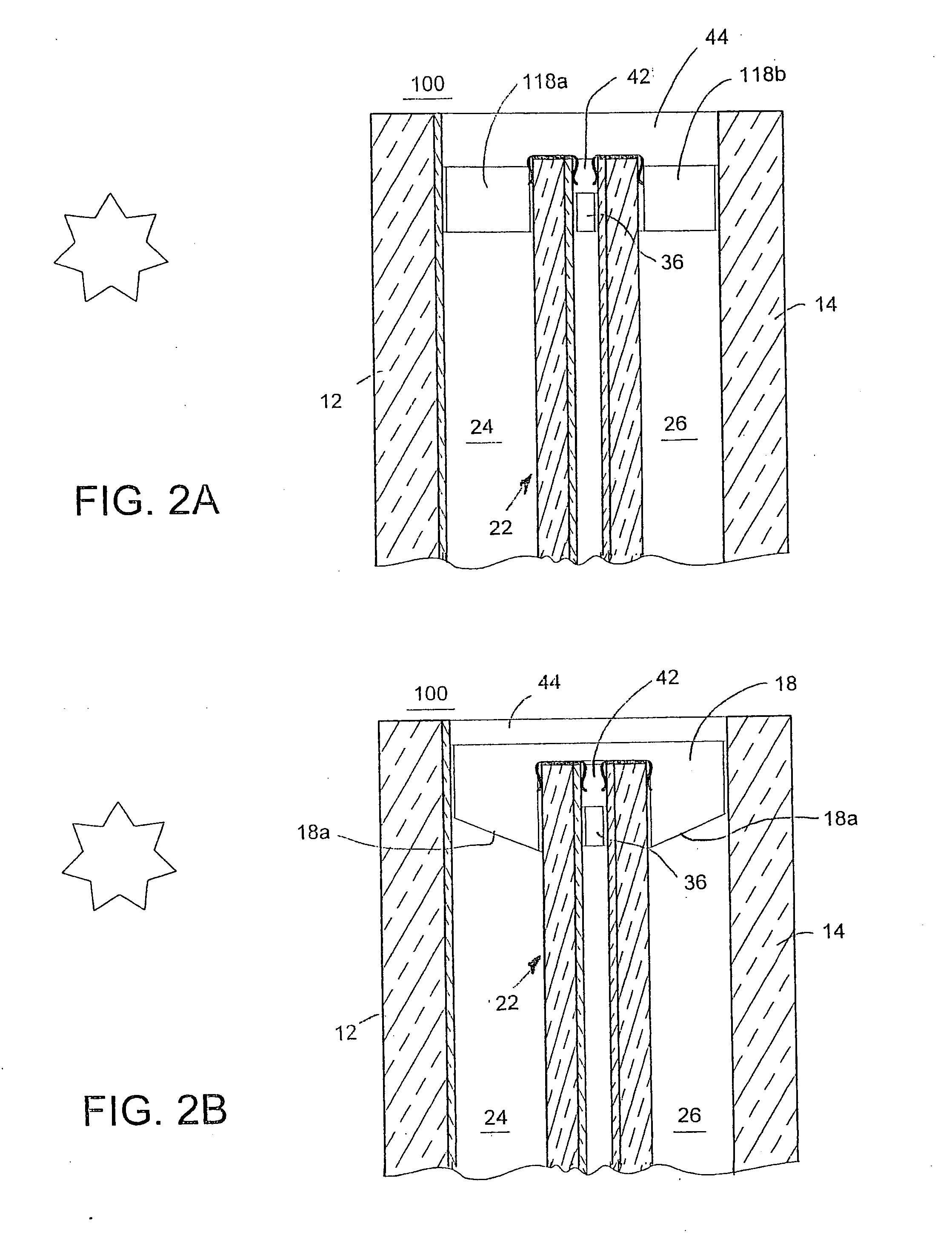Electrochromic windows and method of making the same
a technology of electrochromic windows and windows, applied in the field of windows, can solve the problems of difficult mass production, low life expectancy of electrochromic windows, and inability to be widely accepted commercially, and achieve the effects of less expensive components, less cost, and less cos
- Summary
- Abstract
- Description
- Claims
- Application Information
AI Technical Summary
Benefits of technology
Problems solved by technology
Method used
Image
Examples
example 1
[0109] Two of the above constructed windows were filled with a solution containing 16 mM dimethyl-4,4′-bipyridinium bis(tetrafluoroborate); 16 mM 5,10-dihydro-5,10-dimethyl phenazine and 30 mM 4′-methyl-2′-hydroxy-phenyl-benzotriazole (Tinuvin P) in propylene carbonate (PC) with 3 wt % polymethyl methacrylate (PMMA). The color coordinates (L*a*b* D65 / 2°) of transmitted light were recorded and the windows were then subjected to 730 hours of high intensity UV light in an Atlas Weather-Ometer with an Xe lamp operating at 0.55 W / m2 at 340 nm (a darkening cycle consisting of operation of the device at 1.2V for 20 sec. and at 0.0V for 40 sec., these times allowed for the devices to undergo darkening to their steady state transmission values and allow the devices to clear completely). The color coordinates were again recorded and the difference (AE) for the windows in their high transmission condition was 2.50 and 2.22 for the low transmission condition ΔE was 4.45 and 4.99.
example 2
[0110] Two windows were constructed the same as in Example 1, but were filled with 16 mM bis (2-phenyl ethyl)-4,4′-bipyridinium bis (tetrafloroborate) 16 mM DMP, 30 mM Tinuvin P in PC with 3 wt % PMMA. A similar test as performed to Example 1 was performed except that the windows were measured after 629 hours. These windows exhibited an ΔE (high transmission) of 1.18 and 1.121 and an ΔE (low transmission) of 1.09 and 1.33.
example 3
[0111] Two windows were constructed having the same structure as in Examples 1 and 2 above except that the windows were filled with 15 mM bis (3-phenyl propyl)-4,4′-bipyridinium bis (tetrafluoroborate), 16 mM DMP 30 mM Tinuvin P in PC with 3 wt % PMMA after 629 hours, which is a conventional electrochromic material. Accordingly, this example served as a control for purposes of comparison with Examples 1 and 2 above. The following measurements were made after 629 hours in the Weather-Ometer. Specifically, the conventional window exhibited an ΔE (high transmission) of 6.72 and 9.93 and an ΔE (low transmission) of 7.50 and 10.01.
PUM
| Property | Measurement | Unit |
|---|---|---|
| voltage | aaaaa | aaaaa |
| transmittance | aaaaa | aaaaa |
| temperature | aaaaa | aaaaa |
Abstract
Description
Claims
Application Information
 Login to View More
Login to View More - R&D
- Intellectual Property
- Life Sciences
- Materials
- Tech Scout
- Unparalleled Data Quality
- Higher Quality Content
- 60% Fewer Hallucinations
Browse by: Latest US Patents, China's latest patents, Technical Efficacy Thesaurus, Application Domain, Technology Topic, Popular Technical Reports.
© 2025 PatSnap. All rights reserved.Legal|Privacy policy|Modern Slavery Act Transparency Statement|Sitemap|About US| Contact US: help@patsnap.com



